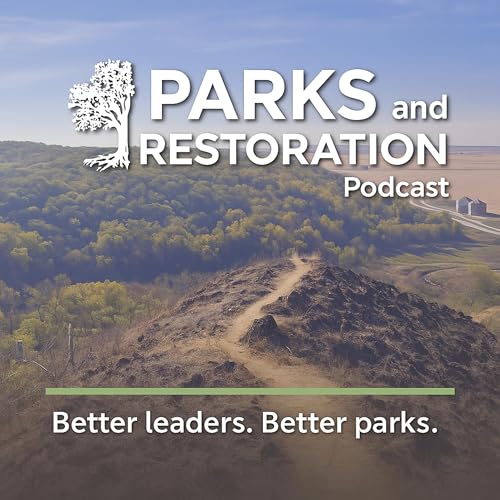How do you eat an elephant?
Most people say, “one bite at a time.” But what if you invited 45 of your friends and turned it into a barbecue?
That’s exactly what happened in Iowa’s Loess Hills when multiple agencies came together for a cooperative cedar-cutting workday—and it’s the perfect picture of how partnerships expand capacity and tackle projects no one organization could handle alone.
In this episode of Parks and Restoration, Chris Lee and Jeremy Yost dive into the power of multi-organizational partnerships. From cooperative burn weeks to large-scale habitat projects, they explore how collaboration helps parks and conservation professionals:
Multiply their impact with limited staff and resources
Build a culture where cooperation is the norm, not the exception
Manage logistics, permissions, and risk across multiple agencies
Tell a better story to the public and media about conservation work
If you’ve ever felt like the challenges in your park system are too big for your team to handle, this conversation will show you how to invite others to the table—and barbecue the elephant together.
Be part of the conversation!
We want to hear your stories (successful or not!) of cooperation/collaboration with other agencies and organizations. Send us a message or leave us a voice memo at www.ParksandRestoration.com.
Chapters
00:00 Building a Culture of Cooperation
05:26 The Power of Community Engagement
10:52 Creating Effective Partnerships
16:41 Logistics of Collaboration
22:20 Expanding Influence Beyond Boundaries
27:12 Building Relationships for Effective Disaster Response
30:11 Decentralized Command: A Key to Effective Leadership
35:10 Logistics and Clarity in Large-Scale Events
39:27 Fueling the Team: Logistics of Food and Recognition
44:36 Transforming Challenges into Collaborative Opportunities
About Parks and Restoration
Better leaders. Better parks.
Parks and Restoration is THE show for current and rising leaders in the parks, conservation, and natural resource professions. Every two weeks, you get new episodes that explore key leadership concepts and how they apply to you and your team.
Great parks and healthy lands and waters are the products of strong leadership. We aim to help you become that leader.
Join the movement at www.ParksandRestoration.com
 42 分
42 分 52 分
52 分 50 分
50 分 2025/10/0743 分
2025/10/0743 分 1 時間 2 分
1 時間 2 分 2025/09/091 時間 4 分
2025/09/091 時間 4 分 51 分
51 分 44 分
44 分

